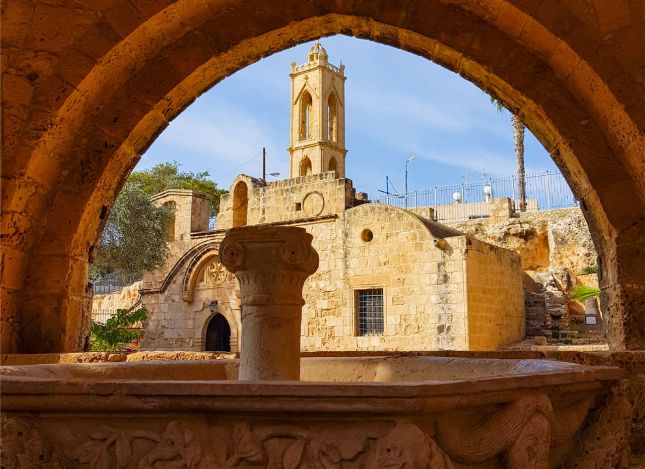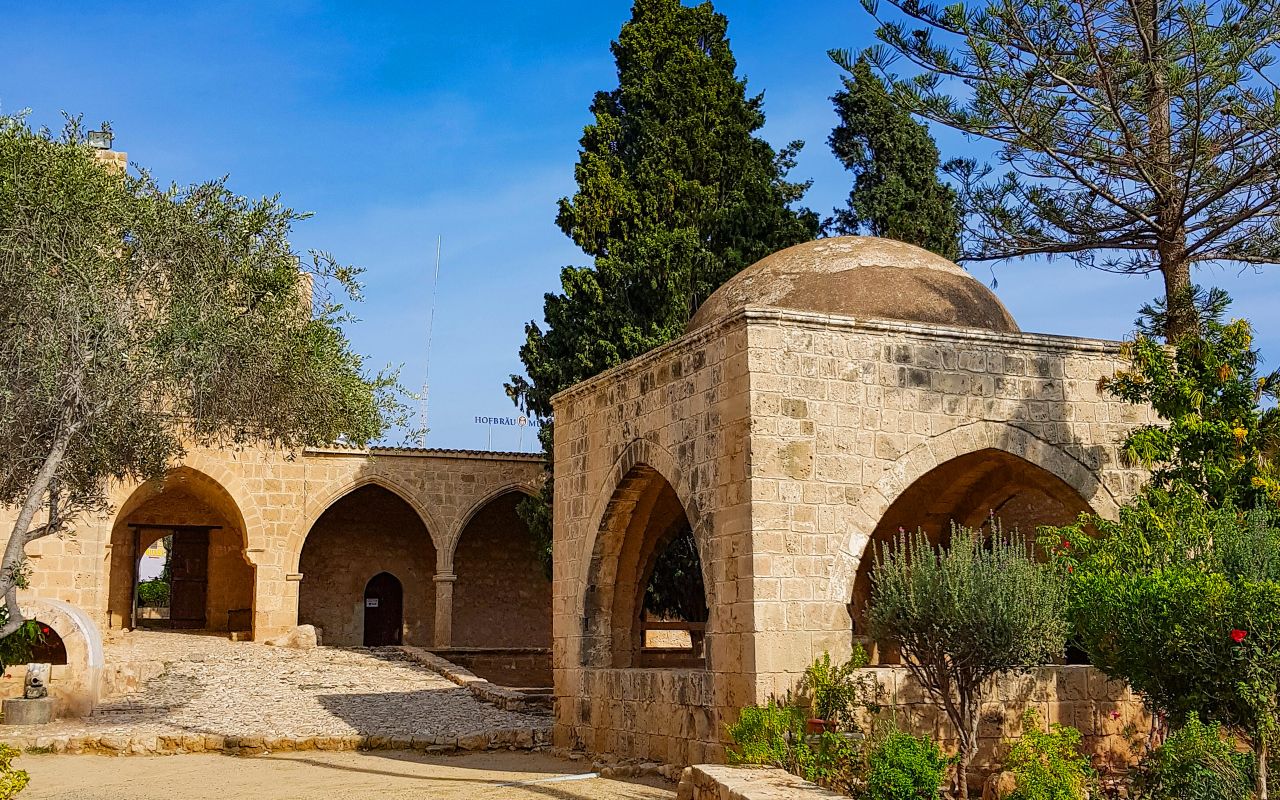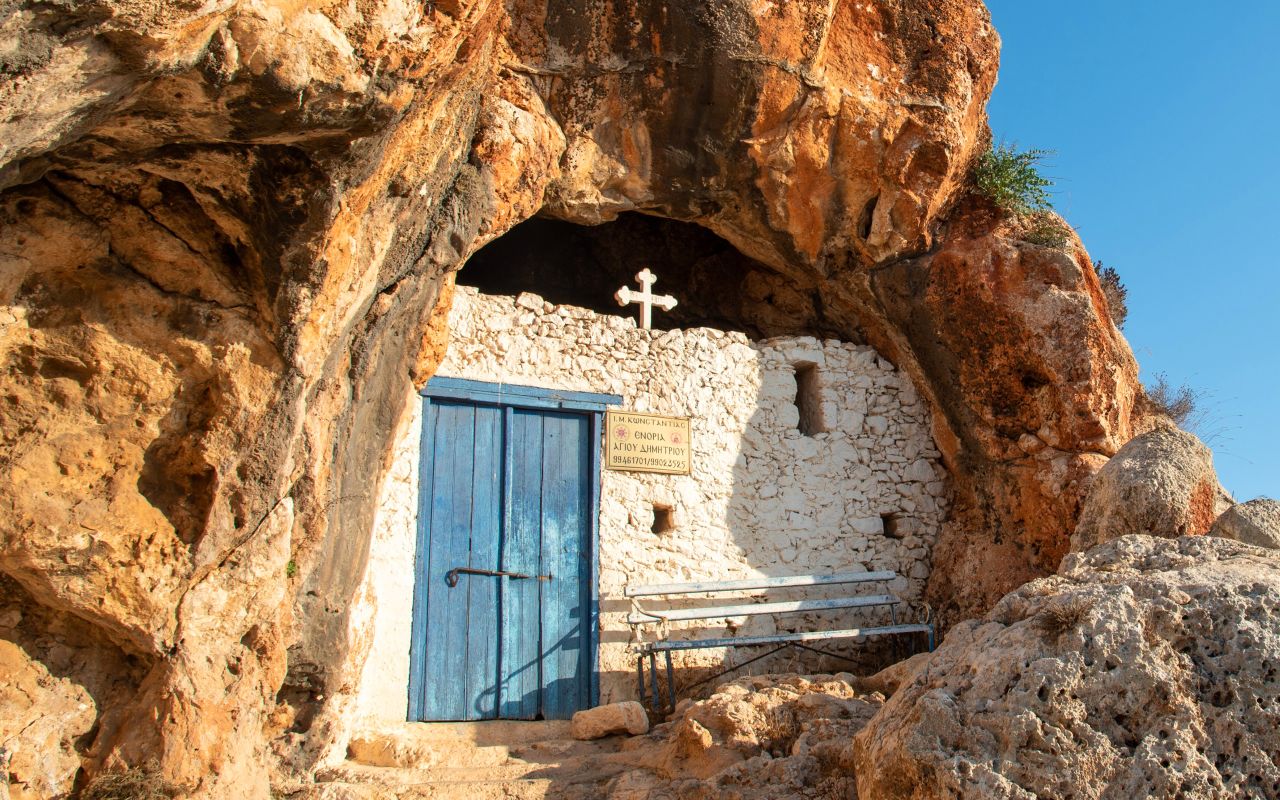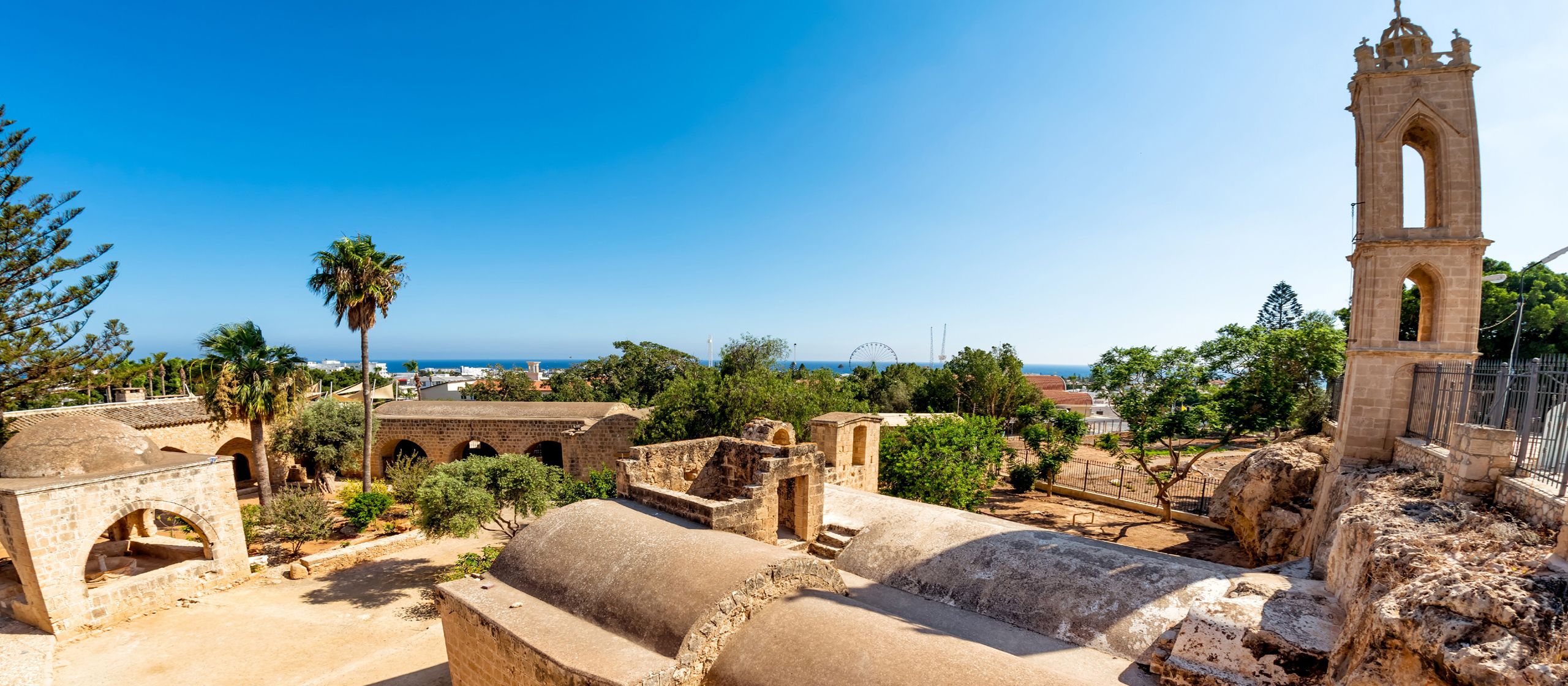Ayia Napa History
The name Ayia Napa is derived from a Venetian-era monastery of the same name, located in the centre of the town, next to the square that today is the clubbing centre. The word “Ayia” (Agia) means “holy” in Greek. “Napa” is archaic and means “wooded valley” or dell. In ancient times the area surrounding the town was covered with thick forest.
According to local legend, the now renowned original icon was accidentally discovered by a hunter in pursuit of his prey. Upon discovery, the icon of the Virgin Mary was called Virgin Mary of Napa, eventually shortened and now known as Ayia Napa. The present monastery, built in 1100, was built around the cave, in honour of the Virgin Mary of Ayia Napa. According to local tradition, until 1790 no one lived within close vicinity of Ayia Napa. The first inhabitants were from Salonica, Greece. The name of the first inhabitant of Ayia Napa was Nikolaos Kemitzis from thesalloniki. he arrived from Greece around 1790 and got married to a village located on the northern east part of Ayia Napa and paralimni, the name of the village was panayia. soon after the marriage kemitzis had a fight with the ottoman authorities which ruled Cyprus at the time. and decided to move near the monastery of ayia napa.
Geographically, Ayia Napa lies near Cape Greco at the eastern part of Cyprus, just south of Famagusta and forms part of a larger area known as Kokkinochoria (“Red Villages”, a name derived from the red colour of their soil). It is a town of Famagusta District, in the remaining southern part of the district occupied by Turkish forces in 1974. Ayia Napa is about 8 kilometres (5.0 mi) from Protaras, a town that has recently seen similar development, but still manages to remain low-key and remains more favourable for families and Cypriot locals.



Paralimni History
Paralimni is a town situated in the southeast of Cyprus, slightly inland, within the Famagusta District. Since the 1974 Turkish invasion of Cyprus, it has increased in size and status, due to the migration of many refugees fleeing from the north. Many of the people who work in the tourist industry of Protaras and Ayia Napa live in Paralimni, which is now the temporary administrative centre of the Famagusta District and the biggest municipality of the Greek Cypriot-controlled area of the district.
The word Paralimni means “by the lake”. Historically, Paralimni was built on the shores of a shallow lake, which filled with water only in the winter. At the beginning of the 20th century, the whole lakebed was reclaimed for agricultural purposes. Paralimni has not always been where it is now; it was built originally on a hill, which was situated between Deryneia and its present location. In the 15th century, it was moved inland to avoid detection by sea pirates. It is said that the first people to settle at Paralimni arrived just after the capture of the nearby town of Famagusta by the Ottoman Turks in 1571. The first settlement was called Saint Demetrius and this place still bears his name today.
In 1986, after a referendum, it was declared a municipality with the name “Paralimni”. Outside of the town centre, the houses are little more than small rectangular blocks, but this is compensated for by their attractive gardens, especially when the trees are in blossom. The new and emerging generations who earn higher salaries than before are spending larger amounts of money in building modern and picturesque houses.
The countryside surrounding Paralimni has rich red soil and is famous for growing Cyprus potatoes, as well as its picturesque windmills, which are used to draw water from underground aquifers to irrigate the surrounding land. Many of these windmills are now derelict, having been replaced by electric or diesel-powered pumps. Before the rise of tourism, the rich agricultural land surrounding Paralimni was the source of its wealth, and is still of great importance today.
Protaras is a predominantly tourist resort which comes under the administrative jurisdiction of Paralimni Municipality.



